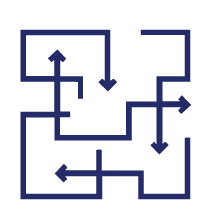CUSTOM COMPUTE SOLUTIONS
Application Specific Compute Solutions
Form factor, environmental conditions, performance requirements and certifications relative to your specific project or product may prevent use of a COTS (commercial off the shelf) computer.
WHY DESIGN AND TEST A PROTOTYPE?
Create a Functioning Prototype That Meets Specifications
The primary goal of engineering design and prototyping is to create a functioning prototype that meets specifications. The prototype is then refined and improved through testing and evaluation to achieve a final product meeting your specific requirements.
Save time and money
Engineering design and prototyping services save time and money overall by identifying and addressing potential problems early in the design phase.
Enhance reliability and quality
Prototyping allows for physical testing and refinement of a product before committing to a more extensive production run, resulting in a more reliable and high-quality final product.
Invest in success
Utilizing engineering design and prototyping services is an investment in the success of a new product or technology.
IMPORTANCE OF FIELD-TESTED SOLUTIONS
Types of Solutions We Engineer, Prototype, and Test
Our clients understand the importance of field-tested solutions. They come to us for the engineering design, prototyping, manufacturing, and/or lifecycle management of various industrial computing systems and components.
Foxguard builds computing prototypes for industrial companies, OEMs (Original Equipment Manufacturer), and independent software vendors (ISV).
- Industrial human-machine interfaces (HMIs).
- Embedded computers
- Supervisory control and data acquisition (SCADA) devices and HMI-SCADA systems.
- Customized, commercial off-the-shelf (COTS) computers.
- High–end desktop (HEDT) and high-performance computer (HPC) systems.
- Image generators (IG) and portable trainers for the simulation and training industry.
- Reverse engineering of computers for industrial applications.
- IT/OT convergence
STARTING YOUR COMPUTER DESIGN AND PROTOTYPE
Define Project Requirements
A thorough evaluation of project and product specifications reduces the number of iteration cycles during prototyping. Our experienced engineering team will work closely with you to understand your specific needs and tailor the best solution for you.
Define the project’s purpose
Define the requirements for the functionality of the product.
For example, the purpose of an electric utility substation gateway device will have fundamentally different requirements than a portable trainer for Department of Defense (DoD) simulation and training equipment.
Consider the computer’s environment
Detail the environment in which the computer will need to operate. These might include mission-critical factors, such as heat, humidity, dust, shock and vibration, corrosion, frequency of use, and the impact of downtime. Additionally, the criticality of the computer must be factored into the design.
Identify compliance requirements and the destination country
Certifications, regulatory requirements, export control restrictions, and the International Traffic in Arms Regulations (ITAR), if military, relevant to the project/product must be incorporated into the design.
Define the computer project’s scope
An understanding of the scope of the project is essential. The following factors will help drive design considerations:
- Number of units and sites
- Lead time
- Deployment schedule
- Warranty requirements
- Need for spare components and stocking programs
Characterize the product’s desired lifecycle
The lifecycle of your solution will influence its design. Upfront, we will want to understand if your project is a:
- One-time design for a specific project or use.
- Sustained design that will be reused or reconfigured for multiple projects.
- Locked configuration with complex requirements.
COMPUTER DESIGN AND PROTOTYPE
Identify System Specifications
After defining the project requirements, the next step is to identify the system specifications.
Determine the platform requirements
Restricted spatial dimensions, thermal, and other considerations will influence the platform choice and selection of core components.
A solution may consist of one or several platforms such as a wall-mount system, rackmount servers, din rail computers, desktop units, towers, servers, laptops, or tablets.
Identify core components
The performance requirements of critical–to–quality components, such as the motherboard, processor, memory, video card, hard drive, and power supply will be reviewed relative to the budget. Examining tradeoffs between performance and budget can make the prototyping process iterative.
Choose the operating system and RAID requirements
We will factor in your choice of operating system (e.g., Windows vs. Linux) and hard drive configuration to meet the performance and/or redundancy (RAID) goals.
Determine peripherals
We will also determine I/O requirements based on devices and peripherals connecting to the computer. Design considerations will include:
- Speed and type/number of I/O ports, such as USB, video, and network
- Basic peripherals like monitor, keyboard, and mouse
- Advanced peripherals like VR (Virtual Reality) headsets or simulator controllers – hands-on throttle-and-stick (HOTAS)
Factor in supply chain security
Our design will factor in both the country of origin components and prohibited vendors. We source our components through qualified and trusted partner channels. We will help ensure that your computing project meets export compliance requirements.
Open lines of communication
Ongoing dialog between you and our Foxguard engineers throughout the prototyping process is critical to minimize cycle time and maximize success.
LEARN MORE ABOUT OUR
Cybersecurity consulting, technology, and systems integration for cybersecurity
With 15+ years of experience in cybersecurity consultation and architecture design, our team of engineers and developers design, manufacture, and integrate computing, cybersecurity, and regulatory compliance solutions used in critical infrastructure markets. Learn more about our cybersecurity consulting and technology and systems integration for cybersecurity.
Testing Your Computing Prototype
Foxguard provides testing and certification for the following:
- Thermal, structural, and environmental testing and certifications.
- Regulatory testing and certification, such as International Electrotechnical Commission (IEC) 60945 (maritime) and IEC 61850/IEEE 1613 (substations).
Final System Testing and Configuration
Foxguard can provide remote access for you to perform final system testing and configuration for factory acceptance tests (FAT).
Learn about Foxguard as a cybersecurity system integrator.
Commercializing Your Prototype
Products are built in our secure, ISO-certified facility and can be shipped worldwide.
Foxguard is ITAR-registered. Through technical and supply chain management programs, we will maintain your configuration for years though extended warranties, lifecycle management, and technical support services.
SIX REASONS TO TRUST FOXGUARD
Trust Foxguard With Your Engineering Design, Prototyping, and Testing

REDUCE COMPLEXITY
We are the sole source for all your computer system integrator needs: one purchase order, one vendor.

Build across the specification continuum
No matter where you are in your specification process, we will meet you there. From original design inputs to contract manufacturing according to your detailed specifications.

Flexible technology
We support both the latest hardware and software tools as well as legacy platforms and reverse engineering.

Rely on our extensive experience
We have 40 years of custom engineering design and computer prototyping experience to meet the unique needs of our clients.

Keep your options open
We are not obligated to specific vendors. We will choose the best components for you and your business.

Open new doors
Successful engineering design and prototyping can lead to innovative, and sustainable solutions to help your company grow.
Want to know more about our products
OUR CLIENTS SAY IT THE BEST

